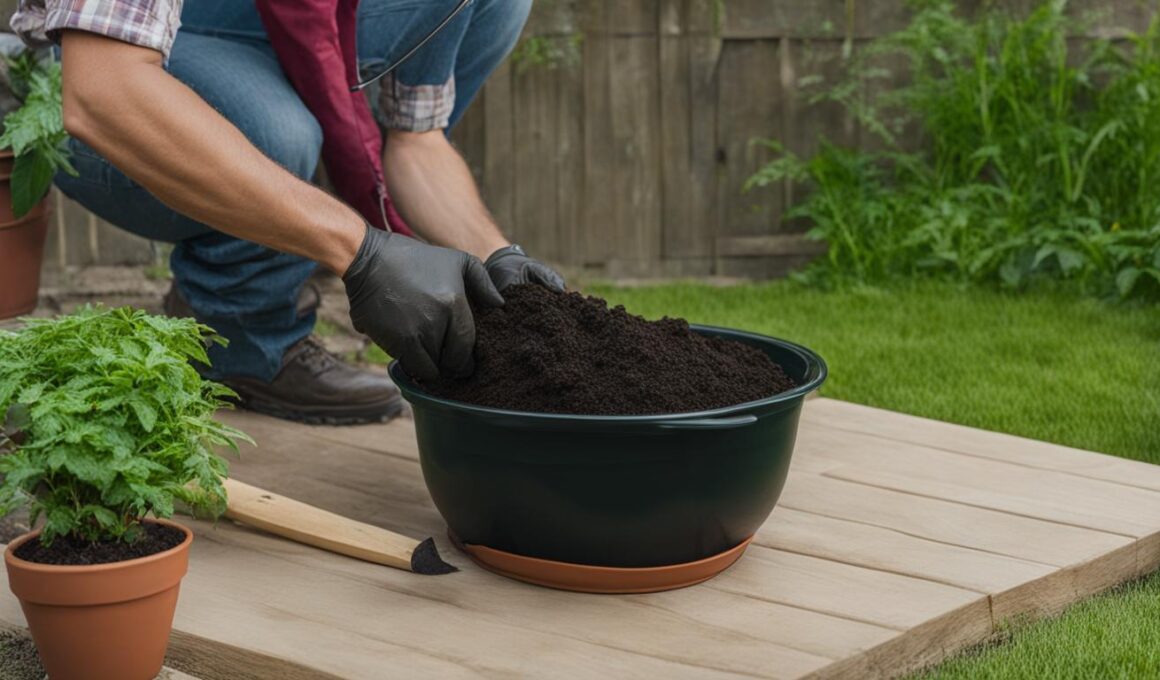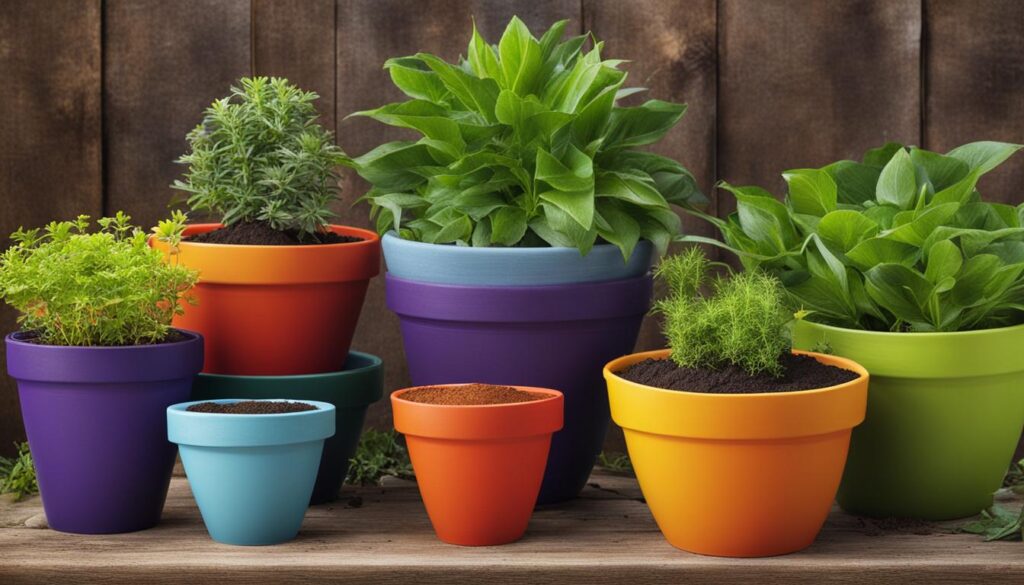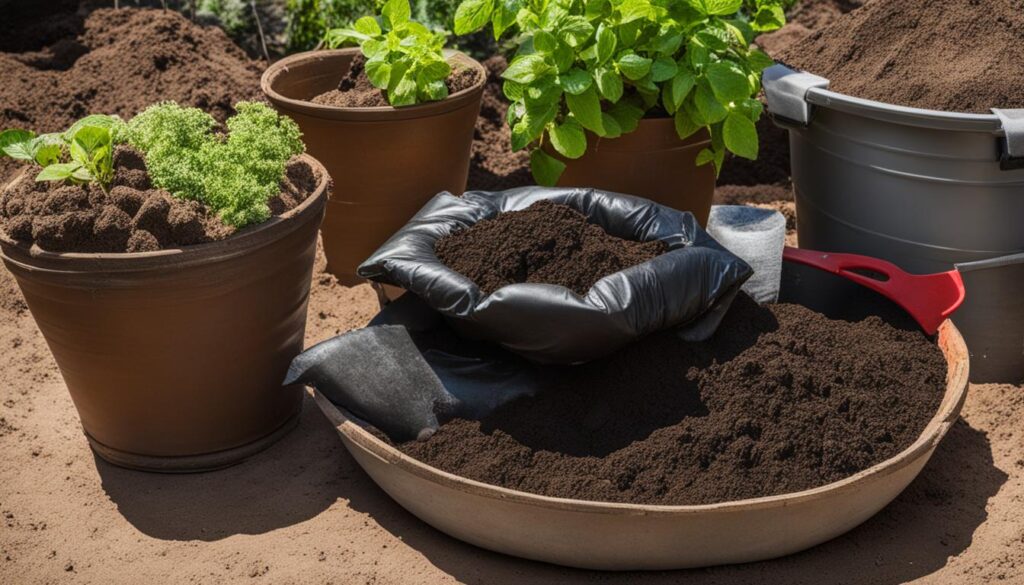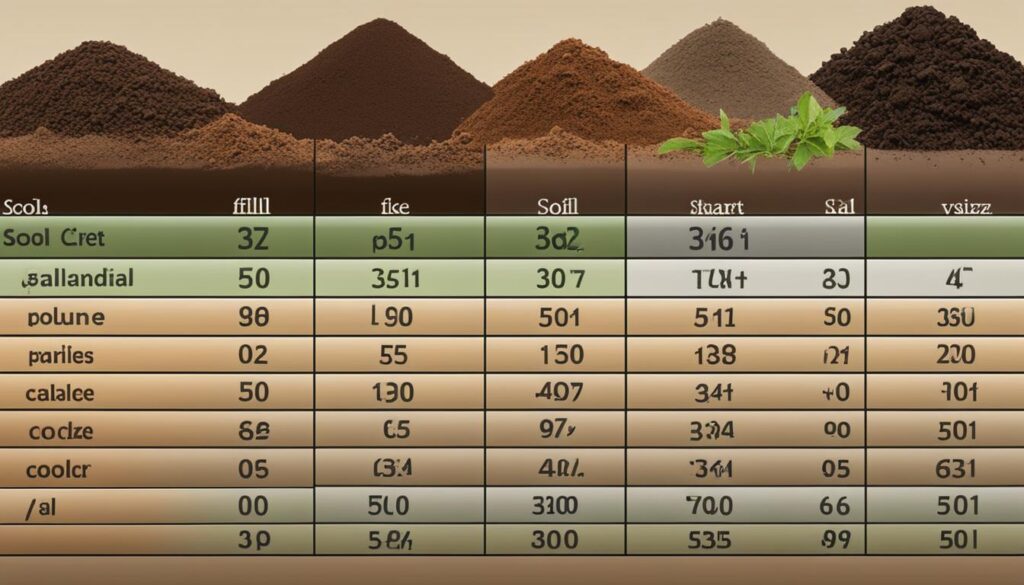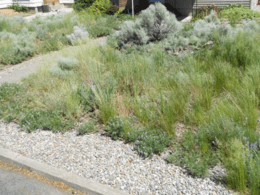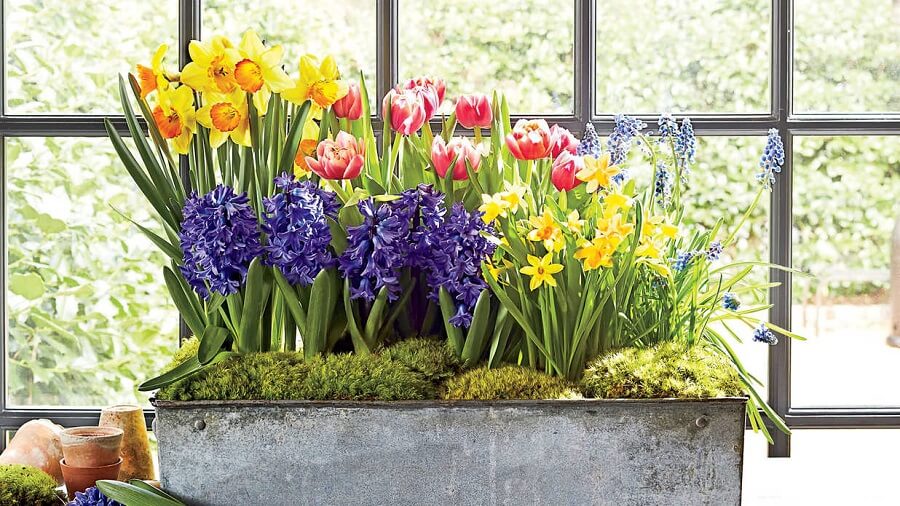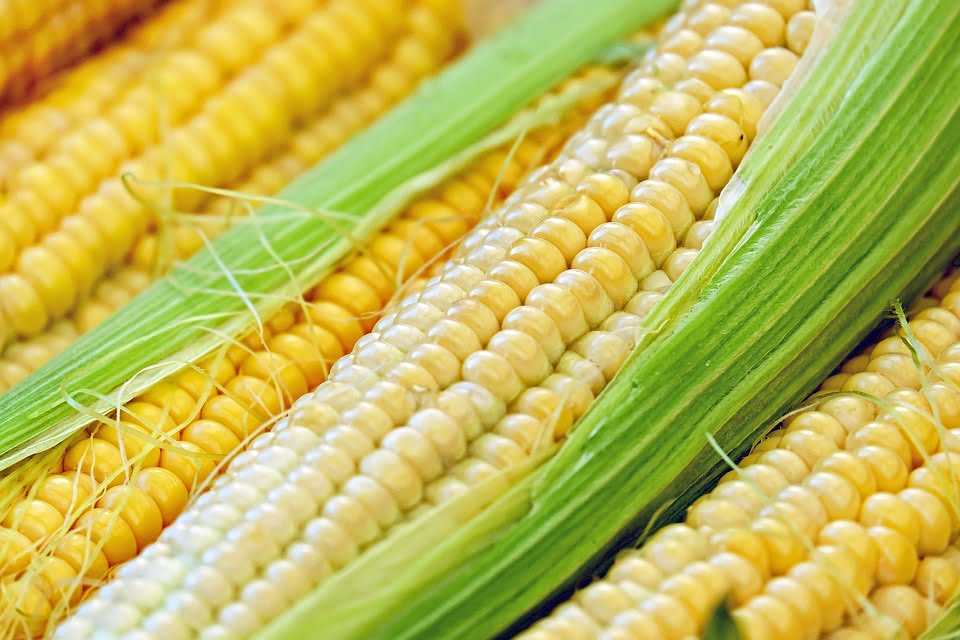When it comes to filling a 30 gallon pot with soil, you might find yourself wondering how much soil you actually need. Estimating the right amount can be a bit challenging, but don’t worry, we’ve got you covered! In this guide, we’ll provide you with some helpful guidelines to ensure that you have the perfect amount of soil for your 30 gallon pot.
Key Takeaways:
- Estimating the amount of soil needed for a 30 gallon pot can be challenging.
- Understanding container sizes and their corresponding volumes is crucial for accurate estimation.
- Factors like soil compression and transplanting can affect the amount of soil needed.
- Use a soil volume conversion chart or a potting soil calculator for precise calculations.
- Consider tips for filling the pot properly, such as filling to the desired level and ensuring proper drainage.
Understanding Container Sizes for Potting Soil
When it comes to potting soil, understanding container sizes is essential for determining the amount of soil you need for your gardening projects. Containers and pots come in various sizes, ranging from small planters to large pots for trees or shrubs. However, estimating the volume of soil required can be challenging due to the variations in shape and size.
The size of a container is typically measured based on its diameter and height. The most common units of measurement are inches and gallons. The gallon size refers to the capacity of the container while the diameter and height provide more specific dimensions. It’s important to note that the volume of a pot is not always equal to its gallon size.
When choosing a potting soil for your plants, consider the depth and width of the container. Deeper pots usually require more soil to provide adequate root space, while wider pots may require more soil to maintain stability. Additionally, the type of plants you are cultivating can also influence the amount of soil needed. Some plants, like vegetables or flowering annuals, require deeper soil for proper root development and nutrient absorption.
Factors Affecting Soil Volume:
- Soil Compression: Dry soil can compress and decrease in volume, so it’s important to account for potential compression when estimating the amount of soil needed.
- Transplanting: If you are transplanting a plant from a smaller pot to a larger one, consider the displacement of soil that will occur. The new pot should have enough space to accommodate the existing roots and additional soil for growth.
- Drainage: Proper drainage is crucial for plant health. Leave sufficient space at the top of the pot to allow for watering without overflowing.
Understanding container sizes and the factors that affect soil volume will help you determine the appropriate amount of potting soil for your gardening needs. By considering the depth and width of the container, as well as the specific requirements of your plants, you can ensure optimal growth and healthy plants.
Factors to Consider When Estimating Soil Needs
Estimating the amount of soil needed for a 30 gallon pot involves considering various factors to ensure optimal plant growth. Here are some key factors to keep in mind:
- Soil Compression: When soil is dry, it tends to compress, resulting in a decrease in volume. It’s important to account for soil compression when estimating how much soil to fill your pot with. Consider adding a bit extra to compensate for the potential decrease in volume.
- Transplanting Effects: When transplanting a plant from a smaller pot to a 30 gallon pot, some soil may get displaced. This displacement can affect the overall volume of soil needed. Take into account the potential soil displacement and adjust your estimation accordingly.
- Plant Watering Needs: Different plants have varying water requirements, and the amount of soil in the pot can affect moisture retention. Consider the specific needs of your plants and adjust the amount of soil accordingly. If your plants require more moisture, you may need to add additional soil to maintain adequate water retention.
By taking these factors into consideration, you can estimate the amount of soil needed more accurately, ensuring that your plants have the right conditions for healthy growth.
Soil Volume Conversion Chart for Pot Sizes
Estimating the amount of soil needed for a 30 gallon pot can be a challenge, especially when there are variations in pot sizes and shapes. To help you determine the approximate quantity of soil required, you can refer to this soil volume conversion chart. It provides conversions from dry quarts or liters to cubic feet, which is the standard measurement for bags of soil.
Here is a handy reference:
Soil Volume Conversion Chart
- 1 dry quart = 0.03 cubic feet
- 1 liter = 0.03 cubic feet
- 1 gallon = 0.13 cubic feet
- 1 cubic yard = 27 cubic feet
By using this conversion chart, you can easily calculate the amount of soil needed for your 30 gallon pot based on the volume of a bag or container specified in dry quarts or liters. Simply multiply the volume by the corresponding conversion factor to get the cubic feet measurement.
With this soil volume conversion chart, you can now confidently estimate the amount of soil required for your 30 gallon pot. It’s always better to have a little extra soil on hand to ensure your plants have ample room to grow and thrive. Happy gardening!
Using a Potting Soil Calculator
Estimating the right amount of soil needed for a 30 gallon pot can be a challenging task. That’s where a potting soil calculator comes in handy. This helpful tool takes the guesswork out of the equation by providing you with accurate measurements based on the dimensions of your pot. With just a few simple steps, you can ensure that you have the perfect amount of soil for your gardening project.
To use a potting soil calculator, start by measuring the diameter and height of your 30 gallon pot. Enter these dimensions into the calculator, which will then calculate the volume of soil you need. Some advanced calculators even take into account the shape of the pot, providing even more accurate results.
Once you have the volume measurement, you can easily determine the amount of soil you need to fill your 30 gallon pot. This way, you won’t end up with too little soil, which can hinder plant growth, or too much soil, which may lead to poor drainage.
Determining the ideal soil volume
- Use a measuring tape to measure the diameter and height of your 30 gallon pot.
- Enter these measurements into a potting soil calculator.
- The calculator will provide you with the volume of soil needed.
- Based on the volume measurement, you can determine the amount of soil required.
By utilizing a potting soil calculator, you can save time and money by ensuring you have just the right amount of soil for your 30 gallon pot. This will help your plants thrive and yield the best results.
Tips for Filling a 30 Gallon Pot with Soil
When it comes to filling a 30 gallon pot with soil, there are a few important tips to keep in mind. These tips will help ensure that your plants have the best chance of thriving and growing to their full potential. Here are some key considerations:
- Fill the pot to the desired level: It’s important to fill the pot with soil up to the desired level. Leaving too much space at the top can result in inadequate root growth, while overfilling can lead to poor drainage. Aim to leave about an inch or two of space at the top to allow for watering and prevent soil from spilling over.
- Consider the specific needs of your plants: Different plants have different soil requirements. Some prefer well-draining soil, while others thrive in soil with higher moisture retention. Research the specific needs of your plants and choose a potting mix that meets those requirements.
- Ensure proper drainage: Proper drainage is crucial for the health of your plants. Make sure your pot has drainage holes at the bottom to allow excess water to escape. You can also add a layer of gravel or broken pottery at the bottom of the pot to facilitate drainage.
- Monitor moisture levels: The amount of water your plants need will depend on various factors such as the type of plant, the environment, and the pot’s location. Regularly check the soil’s moisture level by inserting your finger into the soil up to the first knuckle. If it feels dry, it’s time to water your plants. Avoid overwatering, as it can lead to root rot and other plant health issues.
By following these tips, you can ensure that your 30 gallon pot is filled with the right amount of soil and provides an optimal growing environment for your plants. Remember to stay attentive to your plants’ needs and make adjustments as necessary. Happy gardening!
Conclusion
Estimating the right amount of soil to fill a 30 gallon pot is crucial for successful gardening. By considering factors such as soil compression and transplanting, you can ensure that your plants have the optimal growing environment. Remember to use the soil volume conversion chart to determine the approximate amount of soil needed and take advantage of a potting soil calculator for accurate measurements.
When filling the pot, make sure to fill it to the desired level and consider the specific needs of your plants. Adequate drainage is also important to prevent waterlogging. Following these tips will help you achieve the best results in your gardening endeavors.
So, armed with the guidelines provided in this article and the tools at your disposal, you can confidently fill your 30 gallon pot with the right amount of soil. Happy gardening!
How Much Soil Should I Use for Different Pot Sizes?
When deciding on the soil quantity for a 10 gallon pot, it’s important to consider the size and type of plant. For smaller plants, 6-8 gallons of soil may be sufficient, while larger plants may require 8-10 gallons. It’s important to leave some room at the top for watering and to prevent overflow.
FAQ
How do I estimate the amount of soil needed to fill a 30 gallon pot?
You can use a soil volume conversion chart or a potting soil calculator to get an accurate estimate of the soil volume required.
What factors should I consider when estimating soil needs for a 30 gallon pot?
Factors to consider include soil compression, which can increase the volume of dry soil, and the displacement of soil when transplanting a plant from one pot to another.
What is a soil volume conversion chart and how can it help me?
A soil volume conversion chart provides conversions from dry quarts or liters to cubic feet, which is the typical measurement for bags of soil. It can help you determine the approximate amount of soil needed for a 30 gallon pot.
How do I use a potting soil calculator to estimate the amount of soil needed?
By entering the dimensions of the pot into a potting soil calculator, you can get an accurate estimate of the soil volume required for a 30 gallon pot.
Are there any tips for filling a 30 gallon pot with soil?
Yes, some tips include filling the pot to the desired level, considering the specific needs of your plants, and ensuring proper drainage.
What should I keep in mind when filling a 30 gallon pot with soil?
It’s important to consider factors like soil compression and transplanting, and follow the tips for filling the pot properly to ensure optimal results.





